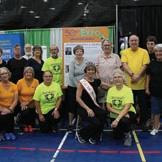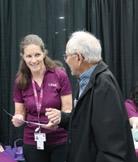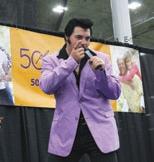

 Jim Miller
Jim Miller
Dear Savvy Senior,



 Jim Miller
Jim Miller
Dear Savvy Senior,
What types of funeral benefits are available to old veterans? My 83-year-old father, who has Alzheimer’s disease, served during the Vietnam War in the 1960s.
– Planning Ahead
Dear Planning,
The Department of Veterans Affairs’ National Cemetery Administration actually offers a variety of underutilized burial benefits to veterans as well as their spouses and dependents.

Most U.S. veterans (both combat and noncombat) who didn’t receive a dishonorable discharge are eligible for burial benefits. To verify your dad’s discharge, you’ll need a copy of his DD Form 214 “Certificate of Release or Discharge from Active Duty.” If you don’t have it, you can request it from the National Archives online at archives.gov/veterans.
Here’s a rundown of some of the different benefits available to veterans who die a nonservice-related death.
If your dad is eligible and would like to be buried in one of the 155 national or 119 state, territorial, or tribal-operated cemeteries (see va.gov/find-locations), the VA provides a number of benefits at no cost to the family, including:
• A gravesite
• Opening and closing of the grave and perpetual gravesite care
• A government headstone or marker
• A United States burial flag that can be used to drape the casket or accompany the urn
• A Presidential Memorial Certificate
If your dad is cremated, his remains will be buried or inurned in the same manner as casketed remains.
But be aware that funeral or cremation arrangements and costs are not taken care of by the VA. They are the responsibility of the veteran’s family, but some veterans’ survivors may be eligible for burial allowances.
The VA also offers a memorial webpage called the Veterans Legacy Memorial (vlm.cem.va.gov) for any veteran buried in a national, state, territorial, or tribal cemetery. This allows families to post pictures and stories of their loved one online as a way to remember and honor their service.
If you’re interested in this option, the VA has a pre-need burial eligibility determination program to help you plan ahead before your dad passes. See va.gov/burials-memorials/pre-need-eligibility or call the National Cemetery Scheduling Office at (800) 535-1117.
The VA also provides benefits to veterans buried in private cemeteries.
If your dad chooses this option, the VA benefits include:
• A free government headstone or grave marker or a medallion that can be affixed to an existing privately purchased headstone or marker
• A burial flag
• A Presidential Memorial Certificate
Funeral or cremation arrangements and costs are again the responsibility of the family, and there are no benefits offered to spouses and dependents who are buried in private cemeteries.
Another popular benefit available to all eligible veterans buried in either a national or private cemetery is a military funeral honors ceremony.
This includes an honor guard detail of at least two uniformed military persons, folding and presenting the U.S. burial flag to the veteran’s survivors, and the playing of “Taps.”
The funeral provider you choose will be able to assist you with all VA burial requests. Depending on what you want, certain forms may need to be completed, which are always better done in advance.
For a complete rundown of burial and memorial benefits, eligibility details, and required forms, visit the National Cemetery Administration online at cem.va.gov.
In addition to the burial benefits, some veterans’ survivors may also qualify for a $948 burial allowance and $948 for a plot to those who choose to be buried in a private cemetery, as well as a $231 headstone or grave marker allowance.
To find out if your dad is eligible or to apply, see va.gov/burials-memorials/ veterans-burial-allowance.
Send your senior questions to: Savvy Senior, P.O. Box 5443, Norman, OK 73070, or visit savvysenior.org. Jim Miller is a contributor to the NBC Today show and author of The Savvy Senior book.
Trusted by ousands of Pennsylvanians
Gain peace of mind by choosing a well-planned, a ordable service by a trusted and experienced provider.
Visit Us Today or Call Now 4100 Jonestown Road, Harrisburg, PA 17109 (717) 910-6507
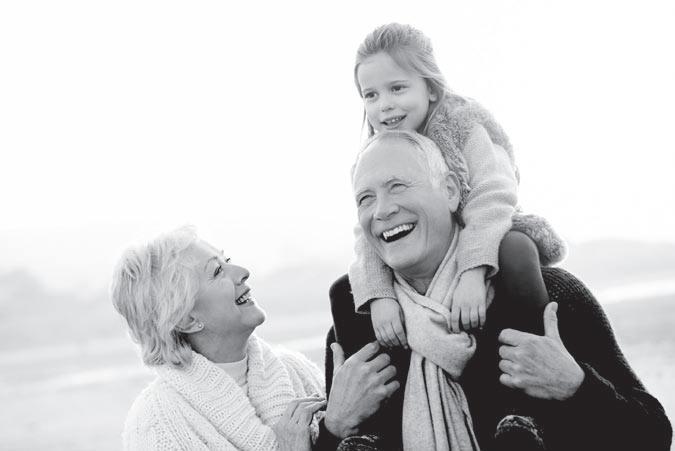
Corpor ATE offiCE
P.O. Box 8049, Lancaster, PA 17604
Phone (717) 285-1350
(610) 675-6240
Fax (717) 285-1360
Email address: info@onlinepub.com
Website address: www.onlinepub.com
prESiDENT AND pUBLiSHEr
Donna K. Anderson
EDiToriAL
Vice president and Managing Editor
Christianne Rupp
Editor, 50plus publications
Megan Joyce
ArT DEpArTMENT
project Coordinator
Lauren Phillips
BUSiNESS DEVELopMENT
Senior Marketing Consultants
Joshua Binkley
Angie Willis
Events Manager
Kimberly Shaffer
ADMiNiSTr ATioN
Business Manager
Elizabeth Duvall

Awards


50 plus Life is published by On-Line Publishers, Inc. and is distributed monthly among senior centers, retirement communities, banks, grocers, libraries and other outlets serving the senior community.
On-Line Publishers, Inc. will not knowingly accept or publish advertising which may be fraudulent or misleading in nature.
Views expressed in opinion stories, contributions, articles and letters are not necessarily the views of the publisher. The appearance of advertisements for products or services does not constitute an endorsement of the particular product or service. The publisher will not be responsible for mistakes in advertisements unless notified within five days of publication. On-Line Publishers, Inc. reserves the right to revise or reject any and all advertising. No part of this publication may be reproduced or reprinted without permission of On-Line Publishers, Inc.
We will not knowingly publish any advertisement or information not in compliance with the Federal Fair Housing Act, Pennsylvania State laws or other local laws.
By Sandra GordonYou can’t see or feel high blood pressure (hypertension), which is why — unlike, say, nausea or fainting — it can be easy to ignore. A better tactic?
Learn more about it, starting with what high blood pressure is.
“Most people think blood pressure is the pressure in their arm, but in reality, it’s the pressure in every blood vessel in your body, including the pressure inside the chamber of the heart,” says cardiologist Dr. Anuj Shah, founder and director of Apex Heart and Vascular Care in Passaic, New Jersey.
Aerobic exercise, like brisk walking or jogging, has been shown to lower blood pressure by 5-7 mmHg in adults with hypertension, which is significant.
To maximize exercise’s blood-pressure-lowering potential, do even more than 90-150 minutes of weekly aerobic exercise.

Over time, unmanaged high blood pressure — blood pressure greater than 130/80 (stage 1) or greater than 140/90 (stage 2) — can lead to serious health problems, including kidney disease, heart disease, and stroke, the leading causes of death in the U.S.
An estimated 50% of the U.S. adult population has blood pressure greater than 130/80. Normal blood pressure of 120/80 or less is the goal.
According to the Centers for Disease Control and Prevention (CDC), only about 1 in 4 adults with high blood pressure has it under control.
The good news? There’s a lot you can do to manage your blood pressure. We investigated the latest medical updates to narrow your to-do list to these three important steps.
1. Push yourself. If you’re diagnosed with high blood pressure, your doctor may suggest focusing on lifestyle changes first before prescribing medication. This approach could include losing weight, reducing caffeine to less than 300 mg per day (about two to three cups of coffee), limiting alcohol to no more than two drinks daily (men) or one (women), and exercising 90-150 minutes per week.
Of those lifestyle changes, “exercise gives you the most bang for your buck,” Shah says. “Even if you’re overweight, there’s a higher chance you’ll be able to maintain all of your cardiovascular risk factors, including blood pressure control, if you exercise regularly.”
A study in Current Hypertension Reports, which reviewed 33 studies on the blood pressure response to exercise, recommended aerobic exercise on most, preferably all, days of the week, and dynamic resistance training (strength training) on two to three days in that same week, which can lower blood pressure by 2-3 mmHg. According to the researchers, this combination could lower cardiovascular disease risk by 20-30%.
2. Do a mental reset. There’s an emotional component to high blood pressure that’s gaining ground. Ongoing stress can set off a hormonal cascade that triggers the autonomic nervous system: the fight-or-flight response.
“Your autonomic nervous system is a set of nerves that controls blood pressure,” Shah says.
It knows no bounds. The autonomic nervous system can be helpful if you’re running out of the way of an oncoming car. But it can chronically raise your blood pressure if it’s constantly activated because you’re worried about losing your job or paying the bills.
To gain better control of your blood pressure, train your mind to deactivate the autonomic nervous system in your daily life. Physical activity is one way to help calm your nerves and another reason to be active.
Consider adding meditation to the mix. A study in the International Journal of Hypertension found that meditation techniques may produce small yet meaningful reductions in blood pressure. And don’t skimp on rest.
“Getting enough sleep also plays a role in controlling blood pressure,” Shah says.
3. Double up on medication. Besides lifestyle, genetics plays a role in hypertension.
“You’re more likely to have high blood pressure if one or two of your parents has it,” says Dr. Daniel Devine, an internal and geriatric medicine physician in Wayne, Pennsylvania. Under those circumstances, you may need medication in addition to modifying your lifestyle to control your blood pressure.
There are four classes of blood-pressure-lowering medication: diuretics, angiotensin-converting enzyme (ACE) inhibitors, angiotensin II receptor blockers (ARBs), and calcium channel blockers.
“Any one of these four medications will help reduce blood pressure by 10-15 mmHg,” says Devine.
The trend now is to prescribe two of these medications at once in lower doses.
“We’ve found that summation of two medicines has a greater effect at reducing blood pressure. They have a synergistic effect,” Devine says.
Do you really have high blood pressure, or is it just elevated in the doctor’s office, a phenomenon known as “white coat hypertension”?
To get a true assessment, check your blood pressure at home in the morning and evening; keep a log for one to two weeks or longer, and bring it to your doctor.
Blood pressure monitors come with cuffs in pediatric, small adult, regular adult, and large and extra-large adult, depending on the diameter of your arm.
Blood pressure monitors aren’t regulated by the U.S. Food and Drug Administration. To select a home monitor that’s clinically accurate, visit the American Medical Association’s validated device listing at validatebp.org before shopping.
For the most accurate home reading, buy an automatic home blood pressure monitor with an upper arm cuff, which measures blood pressure in the brachial artery, an artery close to the heart.
“There’s a bit of a Goldilocks fit. You want to make sure the cuff is the appropriate size for the size of your arm,” Devine says.









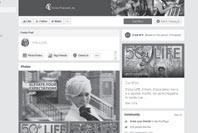

Listings with a screened background have additional information about their services in a display advertisement in this edition. This is not an all-inclusive list of agencies and providers. These advertisers are eager to provide additional information about their services.

Number of Beds: 69
Skilled Licensed Nursing: Yes
Therapy: Speech, Occupational, Physical
Rehabilitation Unit: Yes
Short-Term Care: Yes
Long-Term Care: Yes
Alzheimer’s Unit: Yes
Private Rooms: Yes
Semi-Private Rooms: Yes
24-Hour Medical Care: Yes

Number of Beds: 95
Skilled Licensed Nursing: Yes
BETHANy VILLAgE – THE OAk S 325 Wesley Drive • Mechanicsburg, PA 17055 717-766-0279 • www.bethanyvillage.org
Security System: Yes
Staff Background Checks: Yes
Internet Access: Yes
Recreational Activities: Yes
Scheduled Entertainment: Yes
Medicare: Yes Medicaid: Yes
Accreditations/Affiliations: Eagle, LeadingAge PA Comments: Maplewood Assisted Living also available.

Number of Beds: 58
Skilled Licensed Nursing: Yes
Therapy: Speech, Occupational, Physical Rehabilitation Unit: Yes
Short-Term Care: Yes
Long-Term Care: Yes
Alzheimer’s Unit: No
Private Rooms: Yes
Semi-Private Rooms: Yes
24-Hour Medical Care: Yes
1901 North Fifth Street • Harrisburg, PA 17102-1598 717-221-7902 • www.homelandcenter.org
Security System: Yes
Staff Background Checks: Yes
Therapy: Speech, Occupational, Physical
Rehabilitation Unit: Yes
Short-Term Care: Yes
Long-Term Care: Yes
Alzheimer’s Unit: Yes
Private Rooms: Yes
Semi-Private Rooms: Yes
24-Hour Medical Care: Yes
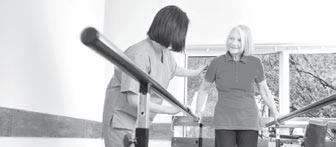
CUMBERLANd CROSSINgS 1 Longsdorf Way • Carlisle, PA 17015 717-240-6013 • www.diakonseniorliving.org
Security System: Yes
Staff Background Checks: Yes
Internet Access: Yes
Recreational Activities: Yes
Scheduled Entertainment: Yes
Medicare: Yes Medicaid: Yes
Accreditations/Affiliations: Leading Age
Comments: Offering a range of exceptional lifestyle options including independent living, personal care, and skilled nursing.
Internet Access: Yes
Recreational Activities: Yes
Scheduled Entertainment: Yes
Medicare: Yes Medicaid: Yes
Accreditations/Affiliations: AAHSA, LeadingAge, NHPCO, PHPCN, PHA PA, HPNA, and CAPC
Comments: A beautiful, full-service continuing care retirement community with a history of more than 157 years of exemplary care.
if you would like to be featured on this important page, please contact your marketing consultant or call (717) 285-1350.
If you’re trying to make conversation at Mother’s Day dinner this year, try sprinkling some of these facts into the discussion:
• One of the earliest celebrations of mothers in recorded history comes from ancient Greece, when a spring festival was dedicated to Rhea, the mother of the gods.
• A Russian woman in the 18th century is said to have given birth to the most children. She was the wife of Feodor Vassilyev, and she produced a total of 69 children, including 16 pairs of twins, seven sets of triplets, and four sets of quadruplets. Of those, 67 are said to have survived infancy.
• The first woman to give birth in the White House was Martha Randolph, daughter of President Thomas Jefferson, on Jan. 17, 1806.

Mother’s Day is May 14
• The first woman to give birth in an airplane was Mrs. T.W. Evans on Oct. 28, 1929, over Miami.
• In 340 B.C., Aristotle observed that dolphins gave birth to live young that were attached to their mothers by umbilical cords. For this reason, he considered dolphins and related creatures to be mammals. Biologists agreed with him — 24 centuries later.
• Eileithyia was the Greek goddess of childbirth and the divine helper of women in labor (in other words, the goddess of labor pain).



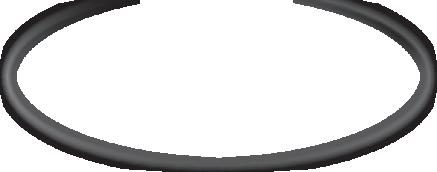







Across 1. Stair part
Challenge
Relinquish 14. Pakistani tongue 15. Particular 16. Following 17. Common street name 18. Star Wars name 19. Refinement
20. Little feet do it
23. Letter before iota 24. Wine label info 25. Pouch 1. Water collector
Mannerism 3. Writer Wharton
Kicker 5. British P.M. before Gladstone
Crowning 7. Track event 8. Be theatrical
Type of grave, for the Titanic
Off in thedistance
“___ alive!”
Chow checker
Bard’s “before”
28. Wished undone
30. Go-getter
32. Morse E
35. Trojan War epic
38. Madame Bovary
39. Seed covering
41. Bullion unit
43. Feathery scarves
44. Give as an example
45. Salami choice
47. Aardvark’s morsel
48. Balloon filler
51. Goya’s Duchess of ___
21. Handbag
22. Small child
25. Apia locale
26. Jordan’s capital
27. Seashore
29. Minor damage
31. Colo. neighbor
32. Russian retreat
33. Bay window
34. Sir or madam
36. Epoch
37. Lady of Spain
40. Luau souvenir
42. It lifts for money
53. Draft choice
54. Plug away
57. Corporate department
60. Submarine part
63. Sick and tired
66. Eye layer
67. Four-star review
68. Cover story?
69. Sheet music symbol
70. Not docked
71. Skin problem
72. Limerick language
73. Tool building
46. Support, in a way
49. Promised land
50. Calendar abbr.
52. Greek public squares
55. Habituate
56. Giblets part
58. Flooded
59. Embankment
60. Die
61. Famed loch
62. Interpret
63. Portly plus
64. Biblical judge
65. Clamor

bellomo & associates
3198 East Market Street York, PA 17402
717-845-5340
rdrotarcassidy@bellomoassociates.com www.bellomoassociates.com
Johnson Duffie
301 Market Street, Lemoyne, PA 17043
717-761-4540 • fax 717-761-3015 wpecht@johnsonduffie.com www.johnsonduffie.com
nikolaus & hohenadel, llP
212 North Queen Street Lancaster, PA 17603 717-299-3726 • fax 717-299-1811 www.n-hlaw.com
stock and leader
221 West Philadelphia Street, Suite 600 York, PA 17401-2994
717-846-9800 fax 717-843-6134 info@stockandleader.com www.stockandleader.com

This
#elderlawattorneys#attorneystotalyearfounded yearstartedinelderlaw*nationalacademyofelder lawattorneys Member? *Pennsylvaniabara ssociation Member?
services.
ssociation ofelderlawattorneys Member? *localbara ssociation Member? specific areas of elder law concentration or comments:
Estate planning, elder law, asset protection planning, Medicaid planning, crisis Medicaid planning, special needs planning, and lifecare planning.
Estate planning, wills, trusts, powers of attorney, living wills/advanced healthcare directives, estate administration, guardianship, Medicaid planning, crisis Medicaid planning, veteran benefits, and special needs planning.
Estate planning, wills, financial powers of attorney, durable healthcare powers of attorney (living wills), guardianships, Medicaid planning, and estate administration. Offices in Lancaster, Columbia, Elizabethtown, and Quarryville.
Estate planning – wills, powers of attorney, financial, healthcare, and general; trusts; end-of-life issues; special needs planning – trusts, guardianship; asset protection – gift tax analysis, business succession planning, charitable giving; medical assistance and Medicaid planning; estate administration; and fiduciary litigation.
Stroke is a danger to everyone, but women can face their own risks of suffering it during their lifetimes.
Pregnancy, preeclampsia, and long-term stress can increase your chances of stroke, so follow this advice from the Sierra News Online website for staying healthy:
Watch your blood pressure. High blood pressure is the top preventable cause of stroke, so keeping blood pressure under control is vital. Have it checked at least twice a year by your doctor, and more often at home when possible.
You can decrease your blood pressure by maintaining a healthy weight, exercising, and avoiding alcohol and tobacco.
Know your risk from past pregnancies. High blood pressure, preeclampsia, gestational diabetes, and blood clots during pregnancy all increase stroke risk, both during pregnancy and after.

May is American Stroke Month
Women who have had preeclampsia have three to four times the risk of high blood pressure and double the risk for heart disease and stroke, according to the Preeclampsia Foundation. They also have an increased risk of developing diabetes.
Manage your mental health. Chronic stress can contribute to high blood pressure and unhealthy decisions, like overeating or drinking too much. Carve out some time to relax every day.
Exercise and meditations can help keep your stress levels low. A therapist can suggest strategies for coping with stress.
Recognize the warning signs. Remember the word FAST to respond quickly to a stroke:
• Face – Is one side of your face drooping? Do you have difficulty smiling evenly?
• Arms – A suddenly weak or numb arm is a symptom of stroke, along with difficulty raising both arms above the head.
• Speech – Are you slurring your words? Having trouble speaking or understanding other people? Try to repeat a simple sentence, like “The sky is blue.”
• Time to call 911 – Any of these symptoms means you should get to a hospital immediately, even if they go away. Keep track of the time so you can tell doctors exactly when the symptoms first appeared.

When you plan ahead, you can design every detail of your own final tribute and protect your loved ones from unnecessary emotional and financial burdens. When you’re ready to get started, your Dignity Memorial® professionals are here to help.
> Lock in today’s prices��> Make your final wishes known > Create a unique, meaningful memorial
> Gain peace of mind for yourself and your loved ones
Stephen J Wilsbach, Supervisor
Erin

I heard the unfortunate words loud and clear from my audiologist: “Your hearing aids can’t make up your deficit in your word discrimination.”
In the just-completed hearing test, I recoiled each too-often time the monotone voice said, “Say [indistinctive word],” causing me to just wild guess. My only hope was that my hearing aids could mitigate the problem.
Learning that my high-tech hearing aids couldn’t help me distinguish “hate” from “ate” produced both anger and despair. I thought these mini-computers in my head were really “bionic ears.”
As I had just turned three-score and 10, I took my hearing loss as a depressing introduction to That 70s Life
Shortly after I flunked my hearing test, I figured


that if I bit the bullet, closed captioning could reduce the impact of my word-recognition loss on TV.
But first I would have to get over my image of closed captioning as the staple of senior-living movie nights. Fortunately, it took me much less time to be comfortable with closed captioning than it did to accept hearing aids.
My wife first suggested I get a hearing test after “what?” started to be a too-common household question. I was in my mid-50s and not crazy about getting a senior-citizen accoutrement.
My bad attitude was not abated by my choice of a hearing aid dispensary, staffed by a dispenser/salesman and not an audiologist. Only my left ear needed an aid, but it never, ever fit well and went on the blink too much, featuring an annoying buzz. My hearing back then was not compromised that much, so I gave up wearing this problematic device after a year or two.
The beginning of my acceptance of hearing aids began 10 years ago, when I decided to seek help from a very professional audiology practice in my hometown. This practice provided me with a state-of-the-art model that never buzzed in my ear, amplified sound well, and was almost invisible.
This microchip ear clip was expensive, but I still had a one-ear discount due to a relatively normal right ear. Over the next few years, my hearing aid, together with my glasses and my MasterCard, were items I gladly never left home without.
A hearing test in 2018, though, indicated I now needed a right ear aid. I feared I was entering the old-codger, two-hearing-aids existence.
But before I could really contemplate this ego dent, I got the double whammy of a $7,000 tab for my impaired hearing. I immediately asked my audiologist if there was a slightly cheaper set, as I was willing to give up hearing all the bells and dog whistles that $7,000 should provide.
My audiologist, though, with a modicum of sympathy, said there was nothing comparable at a lower price. Thus, I purchased the Cadillac of aural enhancement, which immediately moved into third place as my most valuable possession, behind my house and my car.
Still, until two months ago, when I received my “lack of word discrimination” hearing test results, I had stopped dwelling on the cost and accepted my expensive hearing aids as comfortably essential for daily activity.
But now I feel stuck with these un-amazing hearing aids, which were more expensive than half the inventory on a used-car lot but can’t keep American movie audio from sounding as indiscernible as Scottish.
So I tried to ignore the shame in that stock saying: “Close captioning available for the hearing impaired.” Plus, I was surprised to find that some friends were turning on CC.
I have worked on setting CC on all the various venues I use to view movies.
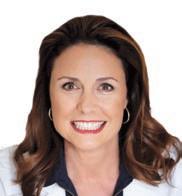
Tinnitus is a condition characterized by hearing some kind of noise or ringing in the ears, often described as buzzing, roaring, clicking, hissing, or humming, when no external sound is present.
Tinnitus is not a disease itself but a symptom of an underlying health issue, which could involve the ear, the auditory nerve, or other areas of the brain. Coping with it is very hard sometimes!
According to the American Tinnitus Association, tinnitus affects approximately 15-20% of the population in the United States, which equates to around 50 million people. Among these, 2 million have extreme and debilitating cases.
Let’s go through the eight most common reasons for tinnitus.

1. Pulsatile tinnitus: This type of tinnitus matches the heartbeat. It can be due to various causes including high blood pressure, changes in the blood vessels near the ear, or increased blood flow near the ears. See a doctor for this one.
2. Meniere’s disease: An inner ear disorder characterized by ringing in the ear, spinning sensation (vertigo), and some degree of hearing loss.
3. Eustachian tube dysfunction: This occurs when the Eustachian tubes, which connect the middle ear to the back of the nose, don’t open or close properly. This can cause a variety of symptoms including noises in the ear.
4. Medications: Certain medications, especially in high doses, can cause tinnitus as a side effect.
5. Earwax buildup: Sometimes, a simple buildup of earwax can cause tinnitus.
6. Blood vessel disorders: Conditions such as atherosclerosis or an arteriovenous malformation can sometimes cause tinnitus. Over-thinning the blood, usually through the use of anticoagulant or anti-platelet medications, can
LoSSES AND GAiNS from facing page
I still have not figured out Amazon Prime’s CC access. This was a problem on a recent movie, Tender Bar, which included extensive dialogue where the young protagonist’s uncle provided life lessons. I know I missed a few lessons that were profound because they were delivered by Ben Affleck. Sure, I’m not happy that my hearing is now downgraded
alter the flow of blood through the vessels.
7. Middle ear conditions: Problems with the bones in the middle ear can cause tinnitus.
8. High blood pressure: Hypertension can, in some cases, cause pulsatile tinnitus.
Now let’s talk about the medications that are commonly associated with tinnitus. It’s a misnomer to assume that you have to take these medications chronically to trigger an episode. It could happen faster than that.
Some of the most common drugs include:
• Aspirin or salicylates, especially in high doses
• NSAIDs, such as ibuprofen or naproxen
• Certain antibiotics, which have been linked to tinnitus
• Antimalarials, such as chloroquine or hydroxychloroquine
• Some people report tinnitus as a side effect of certain antidepressants
If you suspect that a medication is causing tinnitus, speak to your doctor. Some natural remedies exist that could help. For example, ginkgo biloba may increase blood flow to the head and neck. It may also backfire, so use under the guidance of a doctor. Melatonin, B vitamins, and zinc are also potentially useful. Magnesium is probably the most exciting natural option, and I have more about all of these natural treatments if you want to read the longer version of this article at my website, suzycohen.com
If you have symptoms, see an ear, nose, and throat doctor or an audiologist. There’s more information available at ata.org
This information is not intended to diagnose, prevent, or treat your disease. For more information about the author, visit suzycohen.com.
to CC. Thankfully, though, I have good internal hearing, so when that little voice says that at 70, I should feel grateful that hearing loss is my only age-related physical challenge, I hear the voice loud and clear.
Bill Levine is a retired IT professional and active freelance writer. Bill aspires to be a humorist because it is easier to be pithy than funny. He may be reached at wlevine0607@comcast.net
Community for Elderly and Disabled.

• Approximately 15% of American adults (37.5 million) ages 18 and over report some trouble hearing.
• Age is the strongest predictor of hearing loss among adults ages 20-69, with the greatest amount of hearing loss in the 60-69 age group.
• Men are almost twice as likely as women to have hearing loss among adults ages 20-69.
• About 5% of adults ages 45-54 have disabling hearing loss. The rate increases to 10% for adults ages 55-64. 22% of those ages 65-74 and 55% of those who are 75 and older have disabling hearing loss.
• Roughly 10% of the U.S. adult population, or about 25 million Americans, has experienced tinnitus lasting at least 5 minutes in the past year.
• About 28.8 million U.S. adults could benefit from using hearing aids.
• Among adults ages 70 and older with hearing loss who could benefit from hearing aids, fewer than 1 in 3 (30%) has ever used them. Even fewer adults ages 20-69 (approximately 16%) who could benefit from wearing hearing aids have ever used them.
Source: National Institute on Deafness and Other Communication Disorders
Think you or someone you know would make an interesting profile story for 50 plus Life?
We are looking for central Pennsylvanians over age 50 who have a unique hobby, passion, or history of volunteer work, or who are a part of an interesting local club.


Ideal story candidates are willing to talk about themselves and to be photographed. Your name: _______________________________________________________________ Your address: ____________________________________________________________________ Your phone: ________________________________________ Email:_____________________________________________ Nominee’s name (if not self): ____________________________________________________________________________ Nominee’s town of residence: ___________________________________________________________________________ Nominee’s phone: __________________________________ Email: _____________________________________________ Why they would make a great story: _____________________________________________________________________
Note: Please get your nominee’s permission before submitting them!



please email story submissions to Megan Joyce, editor, at mjoyce@onlinepub.com or send via mail to 50plus Life, p.o. Box 8049, Lancaster, pA 17604.

Memorial Day sparks images of sizzling hamburgers and hot dogs on the grill along with sides of baked beans, potato salad, and flag-decorated desserts. This day marks the unofficial beginning of summer.
But Memorial Day also serves as an opportunity to reflect as we honor the brave Americans who fought for our freedom. The holiday is a sacred time of remembrance, and it is the day when we take the time to remember those who’ve died serving and protecting our country.
Most people in the United States celebrate the holiday, but only some are aware of the National Moment of Remembrance, an annual event in which Americans pause for a moment of silence at 3 p.m. on Memorial Day.

The National Moment of Remembrance, although voluntary, encourages everyone to participate by pausing for one minute of silent reflection. You only need to stop your activities for 60 seconds.
The National Moment of Remembrance idea occurred in May 1996 after a school field trip ignited a nationwide conversation.
When a group of schoolchildren touring Washington, D.C., were asked what Memorial Day meant, the children answered that the holiday was “the day the pools open.”
Also, during same month, a Gallup poll showed that only 28% of Americans knew the meaning of Memorial Day.
These responses disheartened many people. Four years later, the White House Commission on the National Moment of Remembrance came into existence. To establish the commission, Congress declared:
“It is essential to remember and renew the legacy of Memorial Day, which was established in 1828 to pay tribute to individuals who have made the ultimate sacrifice to the United States and their families …”
The National Moment of Remembrance is a national act of unity and reflection. This moment of silence gives Americans the opportunity to express their gratitude. More importantly, the National Moment of Remembrance reminds us of the lives lost fighting for our nation.
The National Moment of Remembrance doesn’t replace traditional Memorial Day festivities, such as parades and picnics. Instead, you can observe the moment wherever you are on that day. You can join your fellow Americans in 60 seconds of silent reflection, whether alone or with others.
How does the National Moment of Remembrance fit in with your Memorial Day celebrations?
You can still join the National Moment of Remembrance if you’re not one for Memorial Day picnics, pool parties, and barbecues. Participation in the moment is entirely voluntary.
To join the Moment of Remembrance on your own, wait until the clock strikes 3 p.m. local time. Then stop what you are doing for one minute.
If you are with family and friends on Memorial Day, ask your group whether
they’d like to observe the Moment of Remembrance with you. If they do not know about this, take the time to explain its meaning and purpose.
When 3 p.m. comes, ask your group to stop their actions for one full minute. You don’t have to pray or think about anything specific; just remaining silent for one minute shows your gratitude.
If you live near a military cemetery, you can pay your respects during the National Moment of Remembrance by bringing flowers to the grave of a fallen soldier.
If you have a family member, friend, or loved one who died in the military, it is the perfect opportunity to visit their gravesite. Spending the National Moment of Remembrance at the grave of someone you miss dearly can make it much more meaningful. When the clock strikes 3 p.m., fall silent for one minute to participate in the moment.
May this Memorial Day be a remembrance of those who sacrificed all for our freedom so that we can enjoy the traditional festivities.
Nancy J. Schaaf, a retired RN, worked as a school nurse, a nurse supervisor at a men’s prison, and a health educator. She earned her BSN at Edinboro University. She is a freelance writer whose health articles appear in magazines throughout the U.S. and Canada. She can be reached at nancyjschaaf@gmail.com.







The portable record player has reached middle age.
That’s right: Portable record players have reached 50 years old, and that means a collecting revival is on the horizon. The RCA record players were mid-century modern record players that have retained interest with today’s collectors.
The 1960s and 1970s marks the golden age of portable record players and turntables with built-in speakers. Teenagers would bring their box record player/stereos and handy vinyl record-carrying case to a friend’s house and listen to music after school until dinnertime.


Manufacturers that made turntables with stereo playback hi-fi sound sparked consumers’ interest and encouraged shoppers to buy turntables for the home. The hi-fi sound made them a mainstay in America’s living rooms and dens.
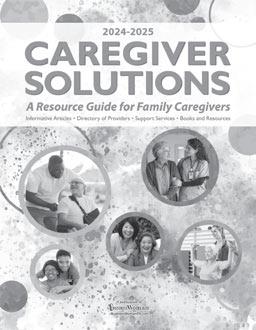

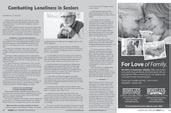



In the late 1800s, Regina tune sheet music boxes, Edison phonographs, and Victor Victrolas represented some of the early versions of record players.
The Regina music boxes were made in Rahway, New Jersey. Housed in a mahogany, oak, or cherry wood box, these music players used a comb mechanism to play 15-inch metal tune sheets of various songs of the day. They were portable and are often available at auctions and online.
In the early 1900s, the famous and highly recognizable Victor Victrola played music from a freestanding cabinet of solid hardwood. This piece of furniture hosted the turntable on the top beneath
please see rECorD on facing page

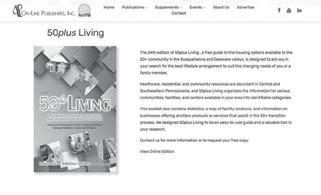








 Tom Blake
Tom Blake
Seventeen months ago, Greta, my mate of 25 years, passed away. I wasn’t technically a widower — Greta and I were not married — but the hurt and loss were like what widowed people experience.
A month later, one of my widowed friends recommended I attend a grief group session near my home. At that session, I quickly learned there were lots of people who were dealing with the same sadness I felt.
Attending that grief group session turned out to be the best thing I’ve done to move on with my life since her passing.
At the first session, there were six women and two men: me and a guy named Jim, age 72, who had been married for 47 years.

Jim had also joined a different grief group where he became friends with five other women. I was pleased when they invited me to become a member of their tightknit group. With them, I’ve enjoyed outings that include dinners, parties, and concerts.
Being with people who have also suffered a loss, or losses, can be very helpful toward the recapturing of one’s life. When one person in the group feels down, which happens for numerous reasons, the other members of the group show empathy, encouragement, and support.
There are times when grieving people isolate themselves inside their homes. They want and need “alone time.”
However, too much isolation is detrimental to one’s health. When that happens to one of our members, other members reach out to that person and encourage him or her to get out of the house and socialize with people who care about them.
rECorD from facing page
a domed lid, speakers that were revealed by opening two panel doors, and a storage area at the bottom that was home to records.
One point of note is that Victrolas are of interest to collectors as long as they are in working condition. Today, certain antique or vintage record players command thousands of dollars with collectors.
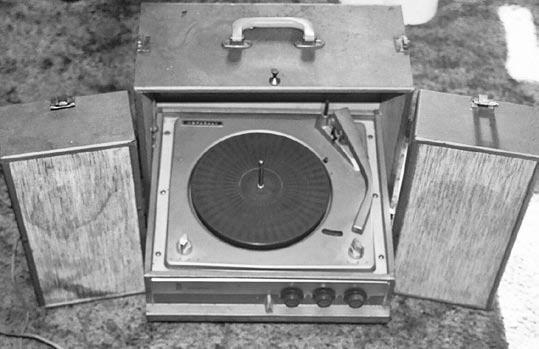
Since 2015, there has been an increase in the value of vintage record players and stereo cabinets housing radio receivers, speakers, and turntables. During my video-call appraisal sessions, most clients are pleasantly surprised with the market retail value for such pieces.
On March 9, our group of seven, plus 10 friends of our group members, went together to see Super Diamond , a Neil Diamond tribute band, at a nearby club. The 17 of us had an enjoyable evening.
Based on the audience’s enthusiasm, the favorite Neil Diamond songs were “Sweet Caroline” (of course), “I Am ... I Said,” and “Forever in Blue Jeans.”
Grief groups are not only places for support, but also places to make new friends. A common bond that makes grief groups so valuable is that each person has encountered a devastating loss (or losses).
The loss could be caused from the death of a spouse, a divorce, the loss of a pet, or even the loss of a job. In our group, the members understand each other and have empathy toward one another.
After the formal grief sessions have ended, often an individual from within a group steps up and puts effort into planning events to ensure the new friends get together often. These friendships may go on forever.
For example, Gina from our group — in her 40s, the youngest — put the Neil Diamond tribute event together, and Katie had a pre-party gathering at her home.
Unlike in senior dating, an age difference in grief groups is a non-issue. Our group has an age range of 40s to 80s.
This group has helped me immensely in getting on with my life after my loss in 2022. And I know the others in my group feel the same way.
For dating information, previous articles, or to sign up for Tom’s complimentary, weekly e-newsletter, go to findingloveafter50.com.

Digital music downloads have changed the way we listen to our favorite songs. Fortunately, convenience has not outpaced vintage style. Many of today’s collectors are adding to their contemporary music libraries with oldschool vinyl records, complete with artful album covers and vintage record players.
Ph.D. antiques appraiser, author, and award-winning media personality Dr. Lori presents antique appraisal events nationwide and appears on Netflix’s King of Collectibles and History channel’s The Curse of Oak Island and Pawn Stars Do America. Visit drloriv. com, watch videos at youtube.com/drloriv, or call (888) 431-1010.

Ooga-chaka ooga ooga
Ooga-chaka ooga ooga
Ooga-chaka ooga ooga
Ooga-chaka ooga ooga
These nonsense syllables kicked off Blue Swede’s “Hooked on a Feeling.” As absurd as the “words” are, this opening chant proved to be a goldmine gimmick for grabbing music-listeners’ attention worldwide.
It’s a meandering path that leads to the “oogachaka” we heard so often in 1974, so let’s do a little time traveling.
In 1959, singer Johnny Preston topped the charts with “Running Bear,” a Big Bopper-composed tale of two Native Americans who love each other but are kept apart by their warring tribes. (Shades of Romeo and Juliet!)
Preston’s million-seller started with “ugga-ugga ugga-ugga ugga-ugga ugga-ugga,” a chant provided by both uncredited country superstar George Jones and the session’s recording engineer.

“Hooked on a feeling”By Blue Swede May 1974
Let’s jump nearly a decade to 1968. Songwriter Mark James has composed “Hooked on a Feeling,” a tune he wrote for his friend, singer B.J. Thomas. (James wrote the song about the thrills of being in love with his childhood sweetheart.)
Thomas took James’s work to No. 5 on Billboard’s Hot 100. We come now to 1971 and Jonathan King, a U.K. music star who had scored a Top 20 American hit in 1965 with the quirky “Everyone’s Gone to the Moon.”
King, who realized the power of a “grabber” introduction on a record, took inspiration from the opening of “Running Bear” to create his own nonsense syllables — “ooha-chagga ooga ooga” — to open his cover version of “Hooked on a Feeling.”
His recording did well on the English charts but went unnoticed in the United States.
This brings us (finally) to 1974. In Stockholm, Sweden, the seven-member

band Blue Swede, fronted by Bjorn Skifs, recorded the most popular version ever of “Hooked on a Feeling.” Released on EMI Records, it reached No. 1 in several countries, including ours.
Mark James’s lyrics had claimed that love is like a drug, that one can be “high on believin’” and that he wants to “stay addicted” to the girl who can turn him on. Pretty innocent stuff, really, but Blue Swede wanted to avoid any possible drug references, so they changed a few words:
B.J. Thomas had claimed:
I got it bad for you, girl
But I don’t need a cure
I’ll just stay addicted If I can endure
But Blue Swede offered:
Got a bug from you, girl
But I don’t need no cure
I’ll just stay a victim
If I can for sure
That awkward change — which never made sense — didn’t hinder the song from becoming a worldwide winner.
P.S. Blue Swede is often dismissed as another “one-hit wonder,” having a lone high-charting disc but no successful follow-ups. Actually, Blue Swede did release a second Top 10 single here, a cover of the Association’s 1967 work “Never My Love.”
Peppy though it was, Blue Swede’s rendition lacked “legs,” as their version didn’t have the catchiness of the smash single that had made the Swedish guys a brief headliner in the world of popular music.
Randal C. Hill is a rock ’n’ roll historian who lives at the Oregon coast. He may be reached at wryterhill@msn.com.



Q. Is a TIA dangerous?
TIA stands for “transient ischemic attack.” A TIA is an interruption in the flow of blood to a part of your brain. Its symptoms are the same as for a stroke.
A TIA lasts anywhere from minutes to many hours. It goes away and leaves no apparent permanent effects.
If you have a TIA, your chances of having a stroke are increased nine times. Treat a TIA like an early warning and get to your doctor immediately for a checkup.
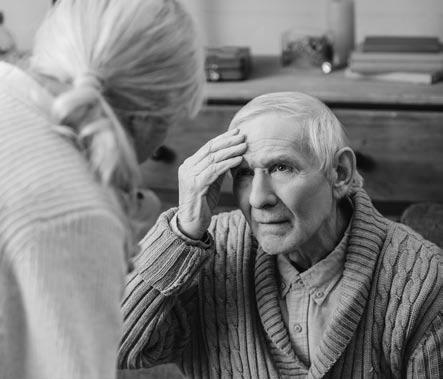
A stroke, which is also called a “brain attack,” is caused by a blood problem in the brain. An “ischemic stroke” is caused by too little blood in the brain. A “hemorrhagic stroke” is caused by too much blood.
About 80% of strokes are ischemic strokes; they occur when blood clots or other particles block arteries to your brain. Hemorrhagic stroke occurs when a blood vessel in your brain leaks or ruptures.
During a stroke, brain cells are deprived of oxygen and nutrients and begin to die. The earlier a stroke is treated, the better the results.
In the U.S., stroke is the third-leading cause of death behind heart disease and cancer. It is the leading cause of adult disability.
The most common stroke symptoms include:
• Sudden numbness, weakness, or paralysis of the face, arm, or leg — usually on one side of the body
• Trouble talking or understanding
• Sudden blurred, double, or decreased vision
• Dizziness, loss of balance, or impaired coordination
• A sudden headache with a stiff neck, facial pain, pain between the eyes, vomiting, or altered consciousness
• Confusion or problems with memory, spatial orientation, or perception
The following can increase your risk of a stroke: a family history of stroke or TIA, aging, race (African Americans are at greater risk), high blood pressure, elevated cholesterol, cigarette smoking, diabetes, obesity, cardiovascular disease, previous stroke or TIA, heavy alcohol drinking, and uncontrolled stress.
Your doctor has many diagnostic tools for stroke. Among these are: physical exam, blood tests, carotid ultrasonography to check the carotid arteries in your neck, arteriography to view arteries in your brain, a computerized tomography (CT) scan of the neck and brain, and a magnetic resonance imaging (MRI) of the brain, among others.
Treatments are varied and include drugs to fight clots, and medical procedures to keep blood vessels open.
Fred Cicetti is a senior and health writer with more than three decades of experience. The Healthy Geezer is devoted to the health questions of seniors who are wondering what is going on with these bodies of ours.

 Doris Montag
Doris Montag
The words “rocking chair” appeared in the Oxford English Dictionary in 1787. Benjamin Franklin was credited with the invention in 1710, but probably early American cabinetmakers or farmers are responsible.
Historians believe the first armless rockers were designed to allow enslaved mothers to rock, or nurse, their babies while doing other chores, like shucking peas, darning socks, and sewing.
Prior to the rocker, women stood, swaying side to side with their children in their arms, unable to get any other work done! The rockers allowed women to use their legs and back to create the rocking motion, thus leaving their hands free.
As utilitarian chairs, they were usually simple, made from pine, and were used outdoors.

Rockers progressed to full size with arms for the comfort of the aged and infirm. Rocking chairs moved from the fields to the front porch, where men would tend to relax.

The rocking relieved aches and produced a calming movement for farmers and others doing heavy physical labor. Rocking chairs were comfortable, reasonably inexpensive, and readily available.
By the early 1800s, most American homes had at least one on the front porch, where families sat to enjoy the view and greet the neighbors. The padded, upholstered seats and back were added when the rocker moved into the house.
The rocking chair is strictly an American design. The first rocking chair concept was created in 1725 with skates tied to the bottom of an American Windsor chair.
The Shaker rocking chair was invented in New York in 1820. The Boston rocking chair arrived in 1825. The wicker and bentwood rocking chairs were introduced in 1860.
Platform rockers, 1876, have seats that rock while the base remains stationary. Springs allow the movement. In 1880, Thonet patented a bentwood rocking chair with a caned seat and back.

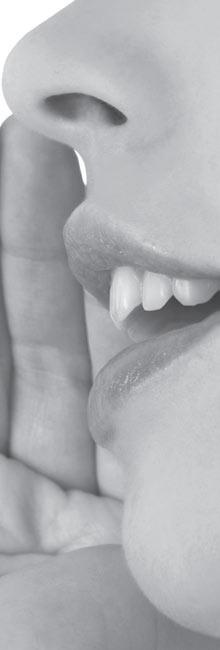
By 1888, the glider rocker with a fixed base and a mechanical gliding seat was introduced. The Adirondack Rocker debuted in 1904, followed by the Mission rocking chair in 1905.
A woman’s rocker was held over from the past, now for sewing or needlework. It is smaller, armless, and typically has a drawer under the seat to hold sewing spools and other small items.
According to The New York Times, the rocking chair “is the most American of all furniture forms, and has been a favorite of statesmen since the 18th century. Benjamin Franklin added metal bends to the base of his outsized library chair to make it rock, and Abraham Lincoln was assassinated while sitting in a Victorian rocker that had been installed at Ford Theater especially for him that night.” It is known as the Lincoln Rocker.
In 1955, due to back pain from a military injury, John F. Kennedy’s physician recommended a rocking chair. Known as the Kennedy Rocker, this Appalachian-style rocker soon became a feature of many American homes. Jimmy Carter and Ronald Reagan owned Maloof rockers (Sam Maloof, designer).
The rocking chair aids in calming the body and mind. Under stress, the body naturally engages in a rocking motion to self-soothe. The movement creates a sense of nostalgia and relief, and the rocking motion releases endorphins in the brain that can improve one’s mood and reduce anxiety and tension.
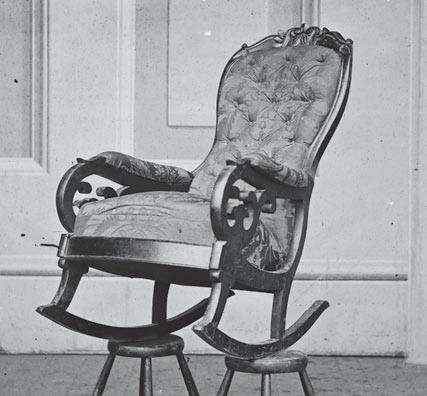

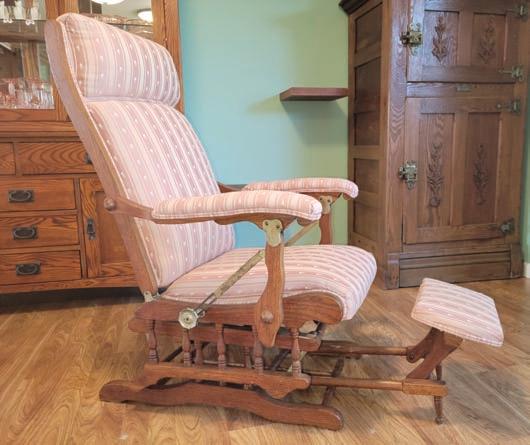
Maybe we all should spend a little more time in a rocking chair!
Doris Montag is a homespun historian and an exhibit curator who researches and displays historical collections of ordinary things, such as can openers, crochet, toy sewing machines, hand corn planters, powder compacts, egg cartons, and more. Contact or follow her on Facebook, HistoryofOrdinaryThings.









